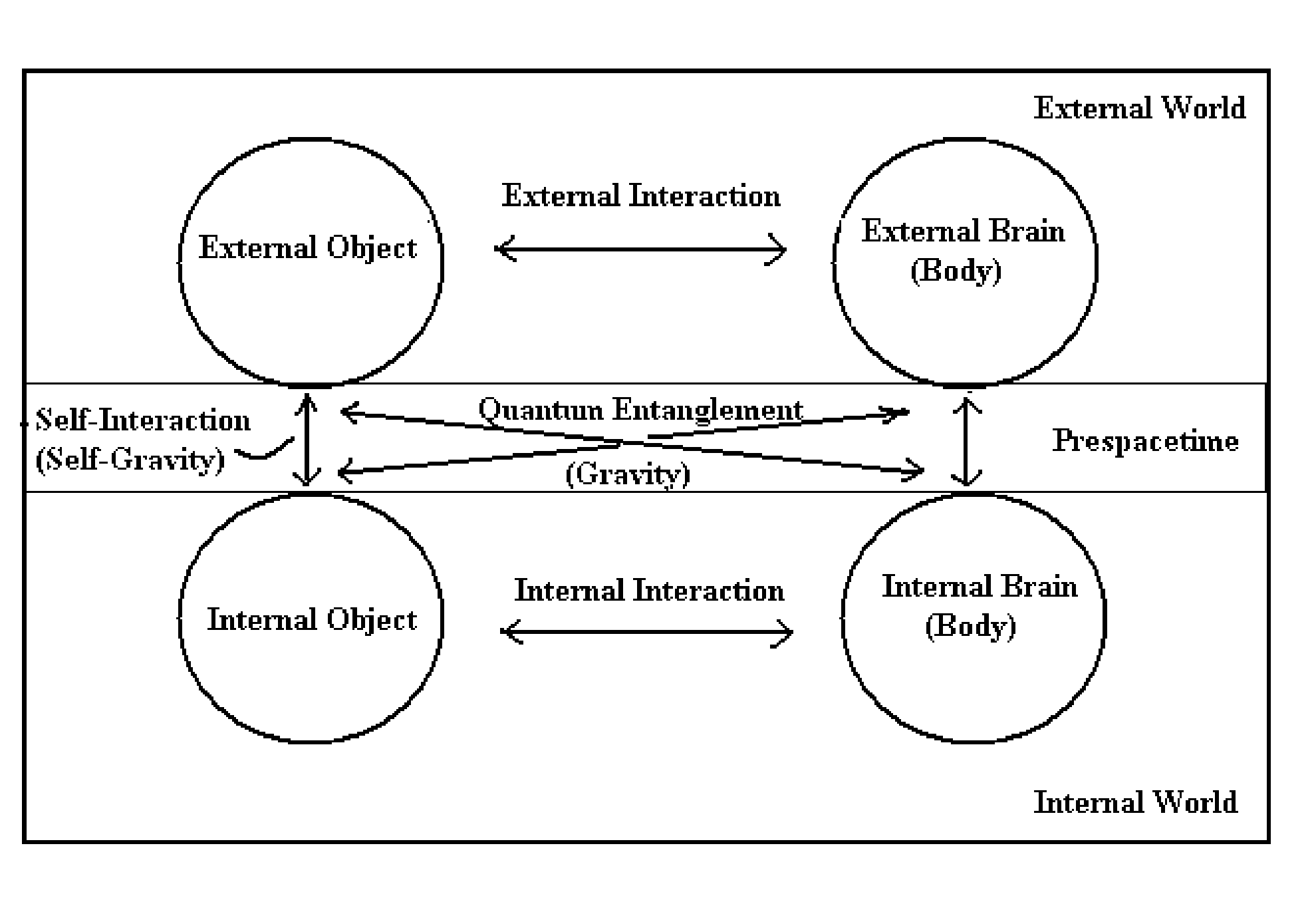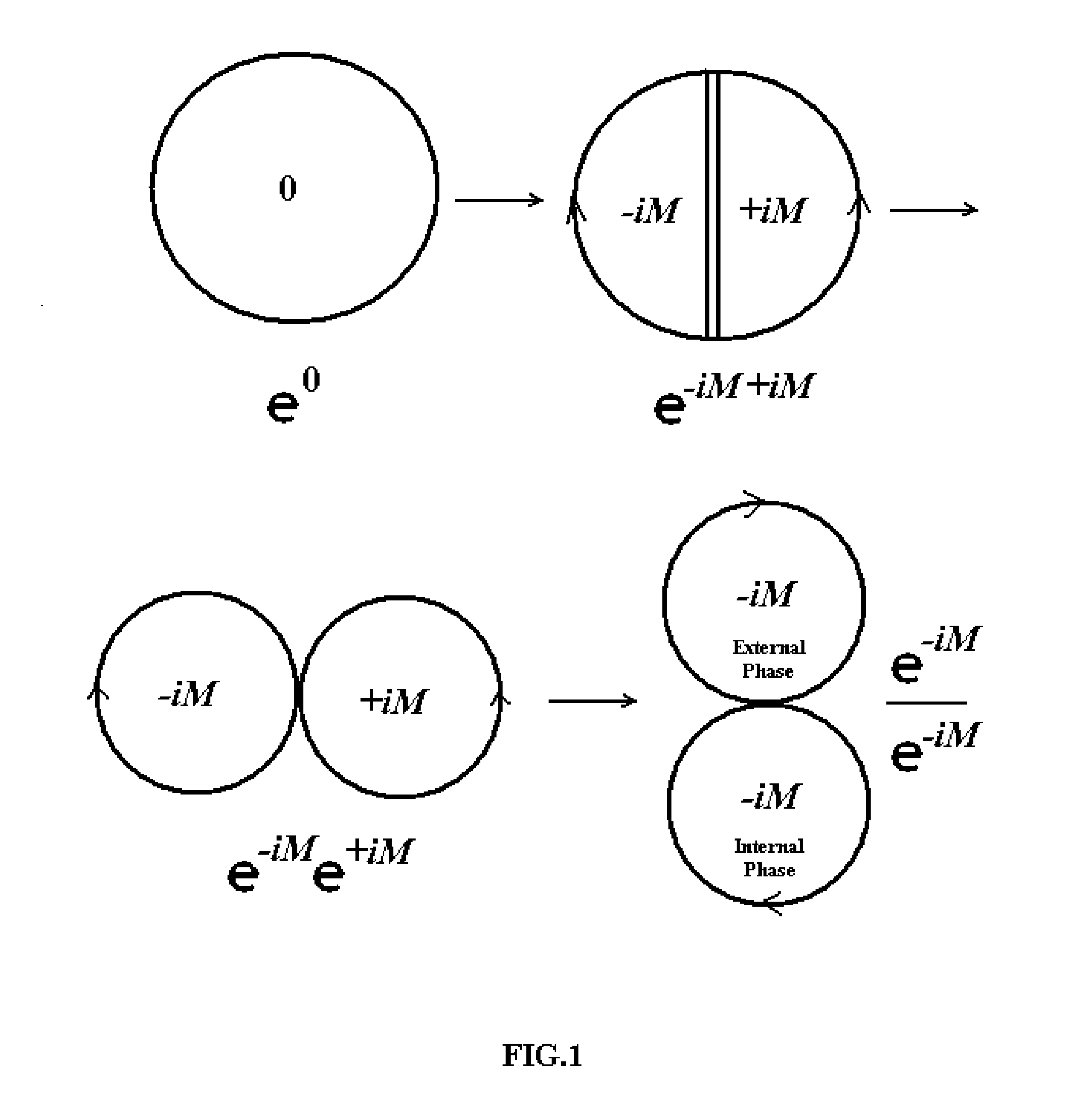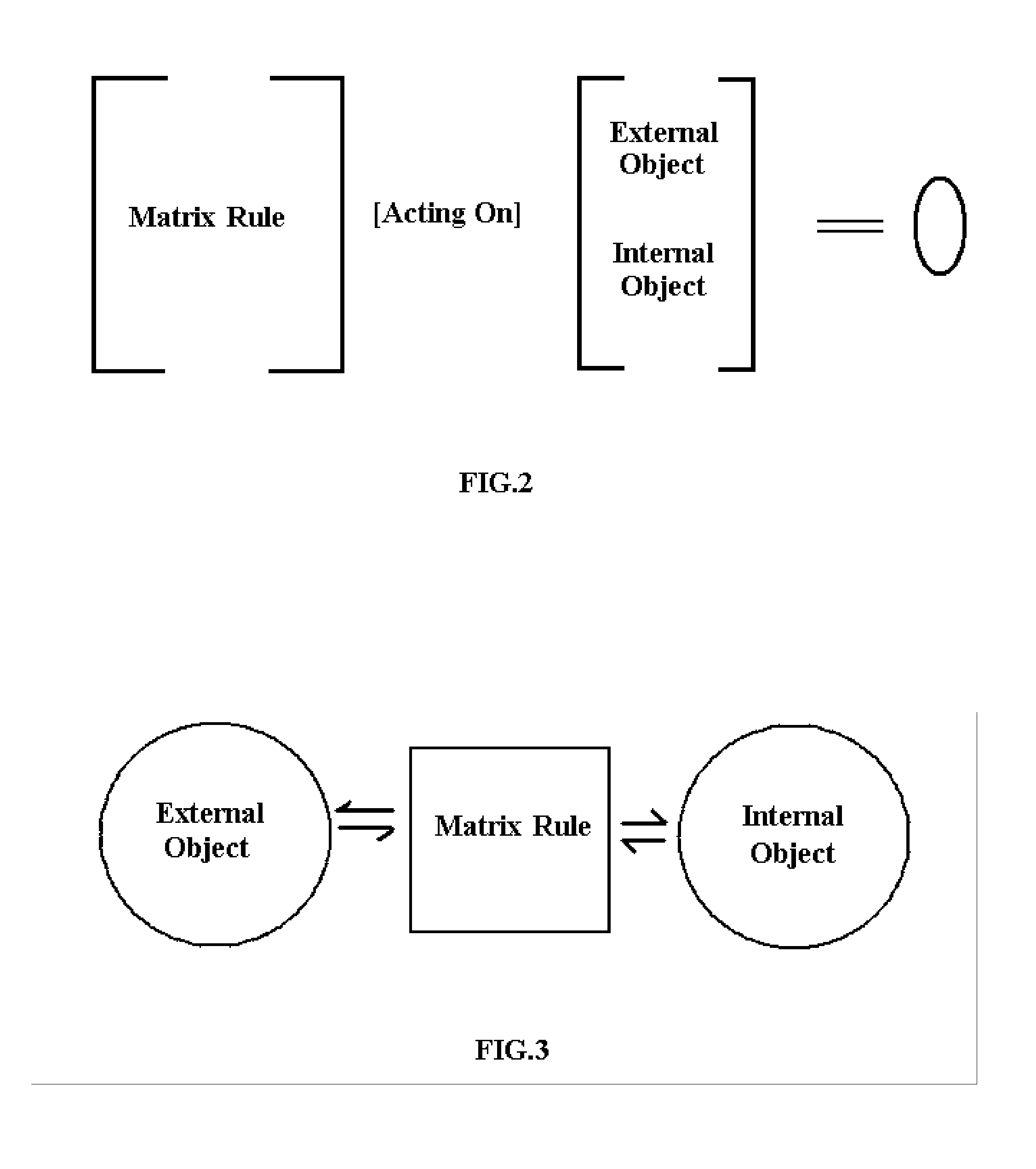Prespacetime model of elementary particles, four forces and consciousness
a spacetime model and elementary particle technology, applied in computing models, analogue processes for specific applications, instruments, etc., can solve the problems of no model previously known, the essence and implications of quantum entanglement are still hotly debated, and the inability of quantum entanglement alone to transmit binary or classical information
- Summary
- Abstract
- Description
- Claims
- Application Information
AI Technical Summary
Benefits of technology
Problems solved by technology
Method used
Image
Examples
first embodiment
[0098]In a first embodiment, a neutron comprised of an unspinized proton in Dirac form shown in 501 and a spinized electron in Dirac form shown in 502 is created, sustained and caused to evolve in the prespacetime as shown in mathematical expressions 503 and 504 of FIGS. 35 and 505 of FIG. 36 in which 506, 507 and 508 indicate proton, electron and neutron respectively. Further, the unspinized proton has electric charge e, the spinized electron has charge −e; 509 and 510 are respectively electromagnetic potential acting on the unspinized proton and the tightly bound spinized electron; and 511 is a binding potential from the unspinized proton acting on the spinized electron causing tight binding as discussed later in this application. If 509 is negligible due to fast motion of the tightly bound spinized electron, 512 is derived from 505. Experimental data on charge distribution and g-factor of the neutron support the neutron in the present model which is comprised of the unspinized pr...
second embodiment
[0099]In a second embodiment, hydrogen comprised of an spinized proton in Dirac form shown in 515 and a spinized electron in Dirac form shown in 516 is created, sustained and caused to evolve in the prespacetime as shown in mathematical expressions 517, 518 and 519 of FIG. 37. 520, 521 and 522 of FIG. 38 indicate proton, electron and hydrogen in FIG. 37 respectively. Further, the spinized proton has electric charge e, the spinized electron has charge −e; and 523 and 524 are respectively electromagnetic potential acting on the spinized proton and the spinized electron in FIG. 37. If 523 is negligible due to fast motion of the spinized electron in FIG. 37, 525 is derived from 519. A Weyl form of 519 and 525 are respectively 526 and 527 of FIG. 38.
VI. Metamorphous View
[0100]The preceding disclosures make it clear that the prespacetime can have many different forms of primordial entities / particles and different manifestations of a single entity / particle as different wave functions and / o...
PUM
 Login to View More
Login to View More Abstract
Description
Claims
Application Information
 Login to View More
Login to View More - R&D
- Intellectual Property
- Life Sciences
- Materials
- Tech Scout
- Unparalleled Data Quality
- Higher Quality Content
- 60% Fewer Hallucinations
Browse by: Latest US Patents, China's latest patents, Technical Efficacy Thesaurus, Application Domain, Technology Topic, Popular Technical Reports.
© 2025 PatSnap. All rights reserved.Legal|Privacy policy|Modern Slavery Act Transparency Statement|Sitemap|About US| Contact US: help@patsnap.com



